Yosemite National Park
One Of The World’s First National Parks, Renowned For Its Spectacular Scenery, Granite Rock Formations & Biological Diversity
At the Tunnel View lookout in Yosemite National Park. April 2, 2013
Yosemite National Park occupies over 3,000& km² of mountainous terrain in the Sierra Nevada of Northern California, 95% of it officially designated as wilderness. It was one of the world’s very first national parks and was central to the development of the national park idea; calls to protect Yosemite Valley from development ultimately led to President Abraham Lincoln’s signing the Yosemite Grant in 1864, although it wasn’t until October 1, 1890, that it officially became the third member of the United States national park system (after Yellowstone National Park, established March 1, 1872, & nearby Sequoia National Park, established September 25, 1890). Designated a UNESCO World Heritage Site in 1984, the park, which boasts thousands of lakes & ponds, 2,500 kilometres of streams, 1,300 kilometres of hiking trails, & almost 600 kilometres of roads, attracts some 4 million visitors each year, all drawn here to sample its spectacular scenery, granite rock formations, & unique biological diversity.
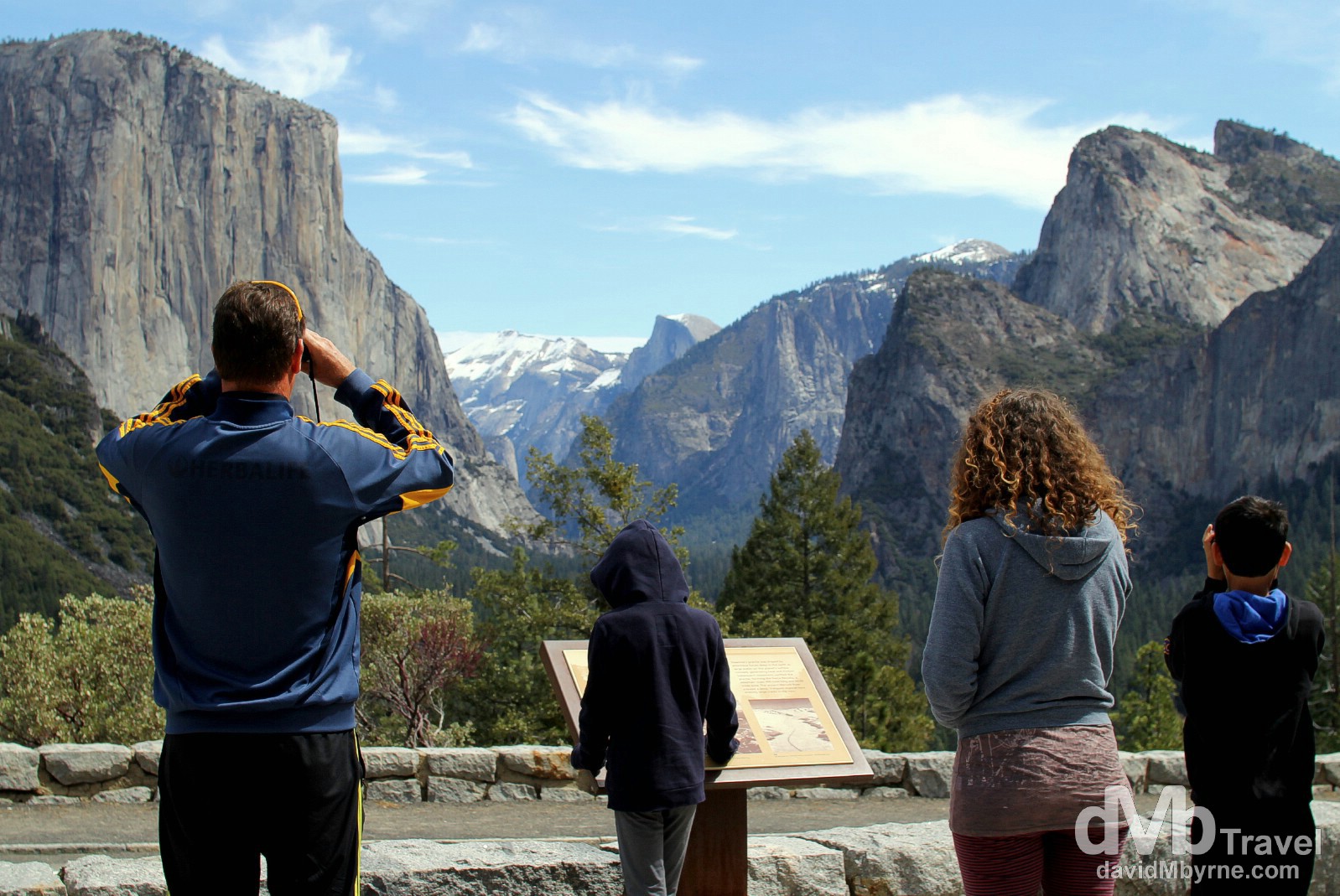
Admiring the Yosemite Valley from Tunnel View in Yosemite National Park (![]() ), California, USA. April 2, 2013.
), California, USA. April 2, 2013.
– UNESCO commenting on Yosemite National Park
Yosemite Valley
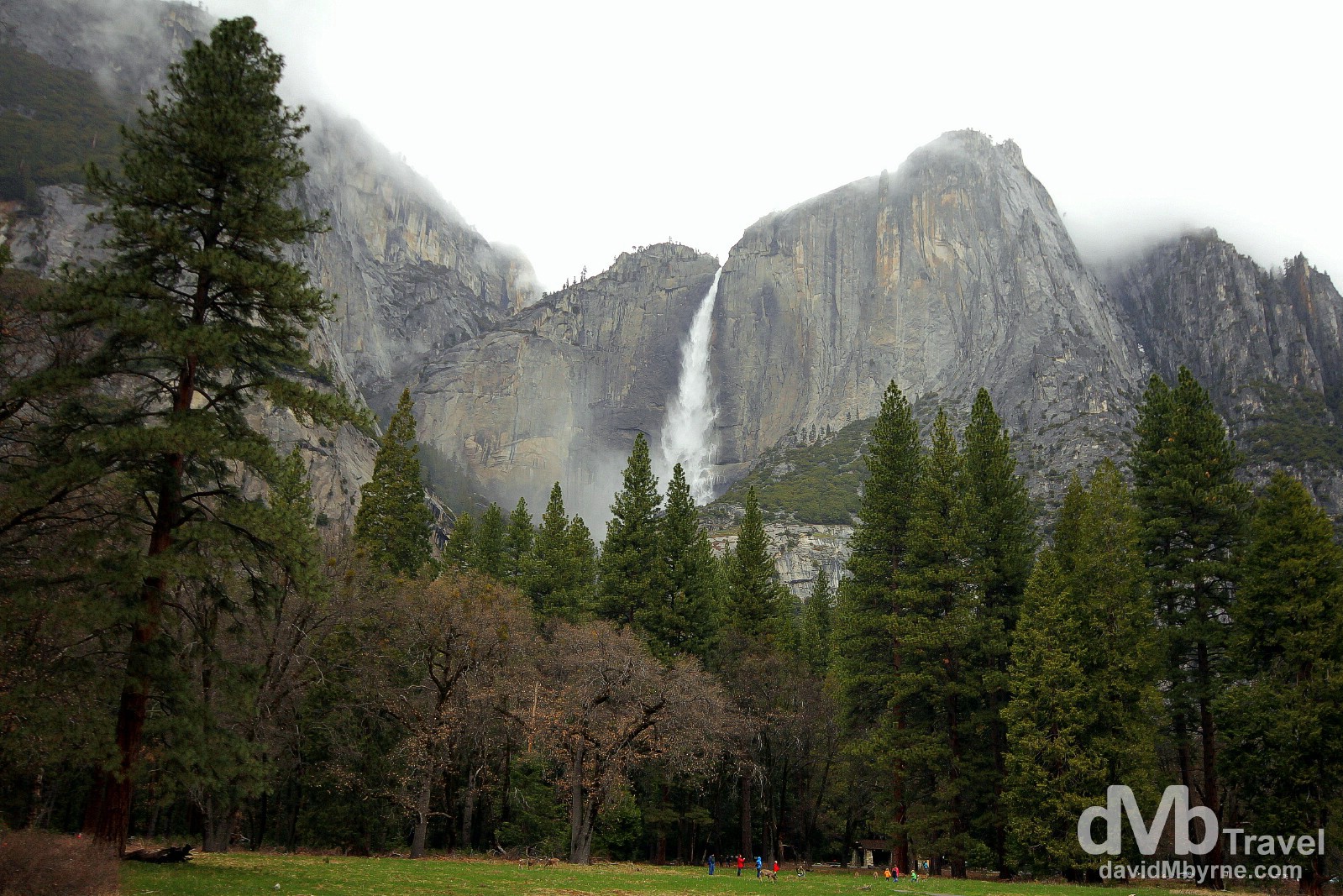
Yosemite National Park is one of the most visited national parks in the United States, with an annual visitation of nearly 4 million. The most visited part of the park is here, the Yosemite Valley, an 18 km² area of the park that is accessible by car year round. This picture was taken late in the afternoon on an overcast day shortly after arriving in the Yosemite Valley having driven from San Francisco on the first day of an 8-day US Southwest road trip. It shows towering trees, the Upper Yosemite Falls, one of the highest waterfalls in the world at 782 metres (2425 ft), & mist shrouding the tops of the granite peaks along the valley edge. Yosemite Valley, Yosemite National Park, California, USA. April 1, 2013
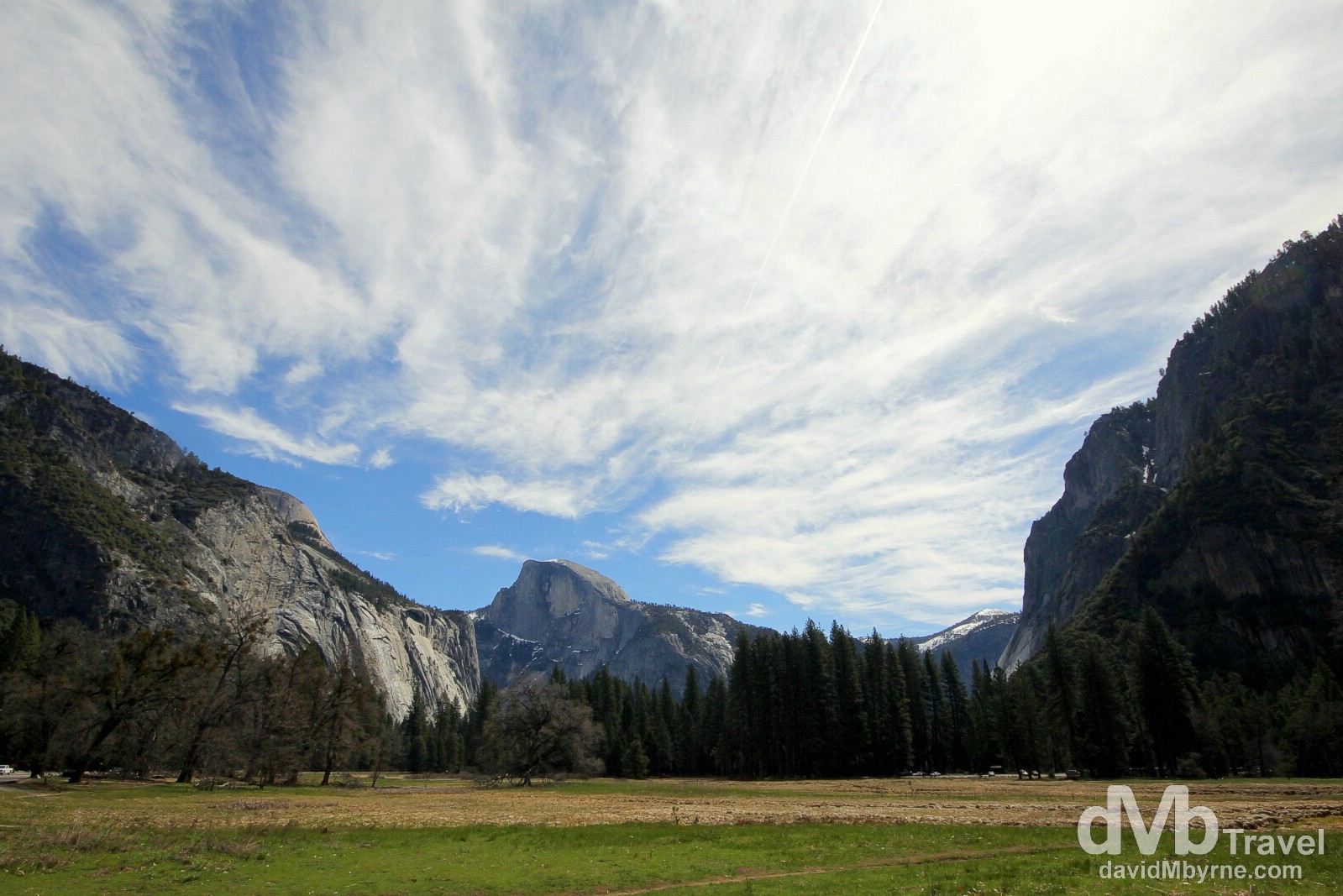
Yosemite Valley, Yosemite National Park, California, USA. April 2, 2013.
Yosemite Granite || Half Dome & El Capitan
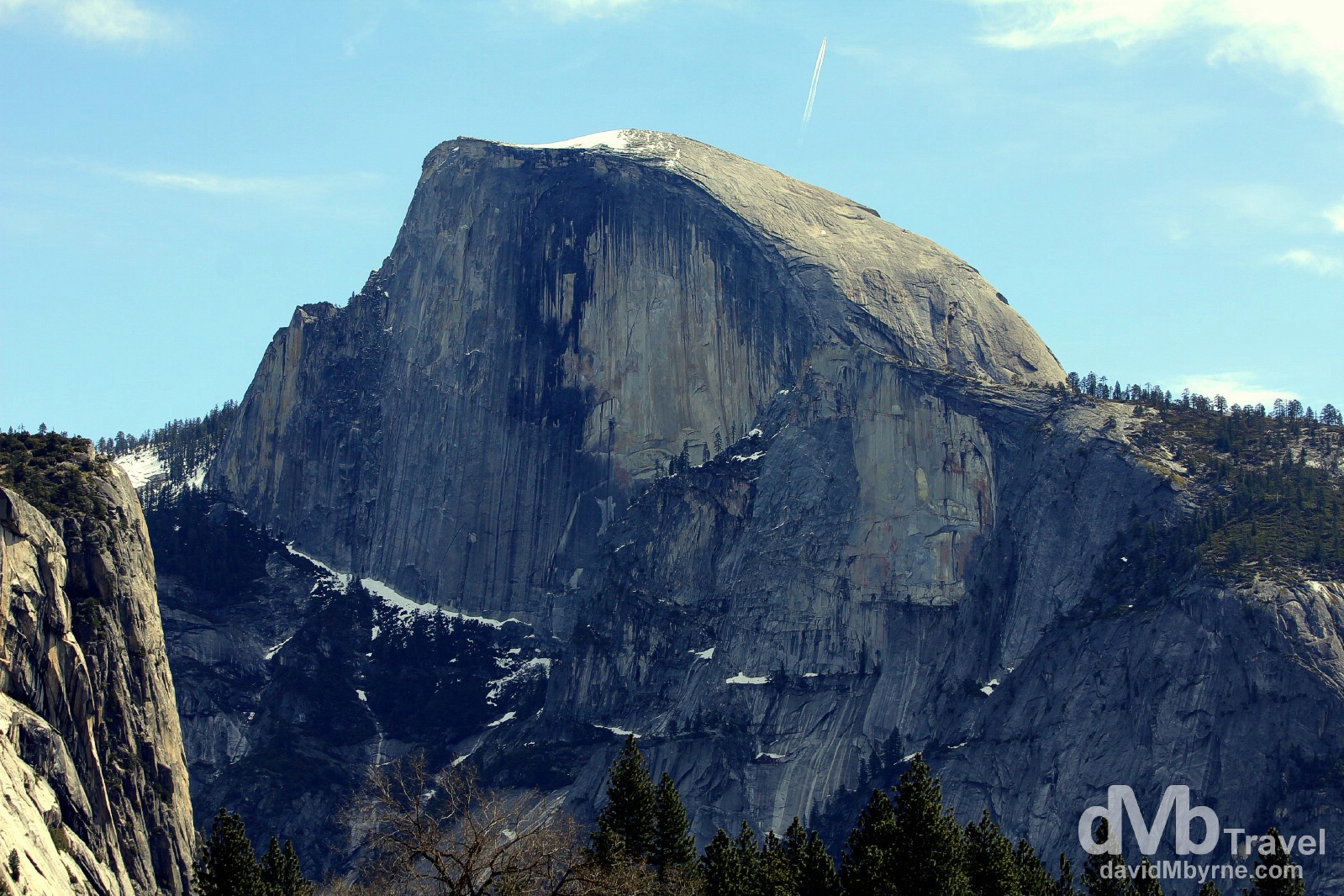
Yosemite has more than a few granite formations but easily its most famous is this rather grandiose lump of granite called Half Dome, so-called because it deceptively looks like it is, well, half a dome (El Capitan, the other of the parks two famous granite lumps, is a climber’s Mecca, offering up a huge sheer face that’s a serious challenge to even the most experienced of scramblers). Geologists claim – more like speculate – that Half Dome’s granite solidified over 8 kilometres underground & as the overlaying rock eroded the formation rose to its current exposed level. When an 1868 Yosemite guidebook rather foolishly declared ‘the summit of Half Dome will never be trodden by human foot’ it was, needless to say, taken as a challenge. Seven years later George Anderson was the first to scale its summit (one wonders what kept him). Countless others have followed since. Yosemite National Park, California, USA. April 2, 2013.
Ansel Adams & The Ansel Adams Gallery
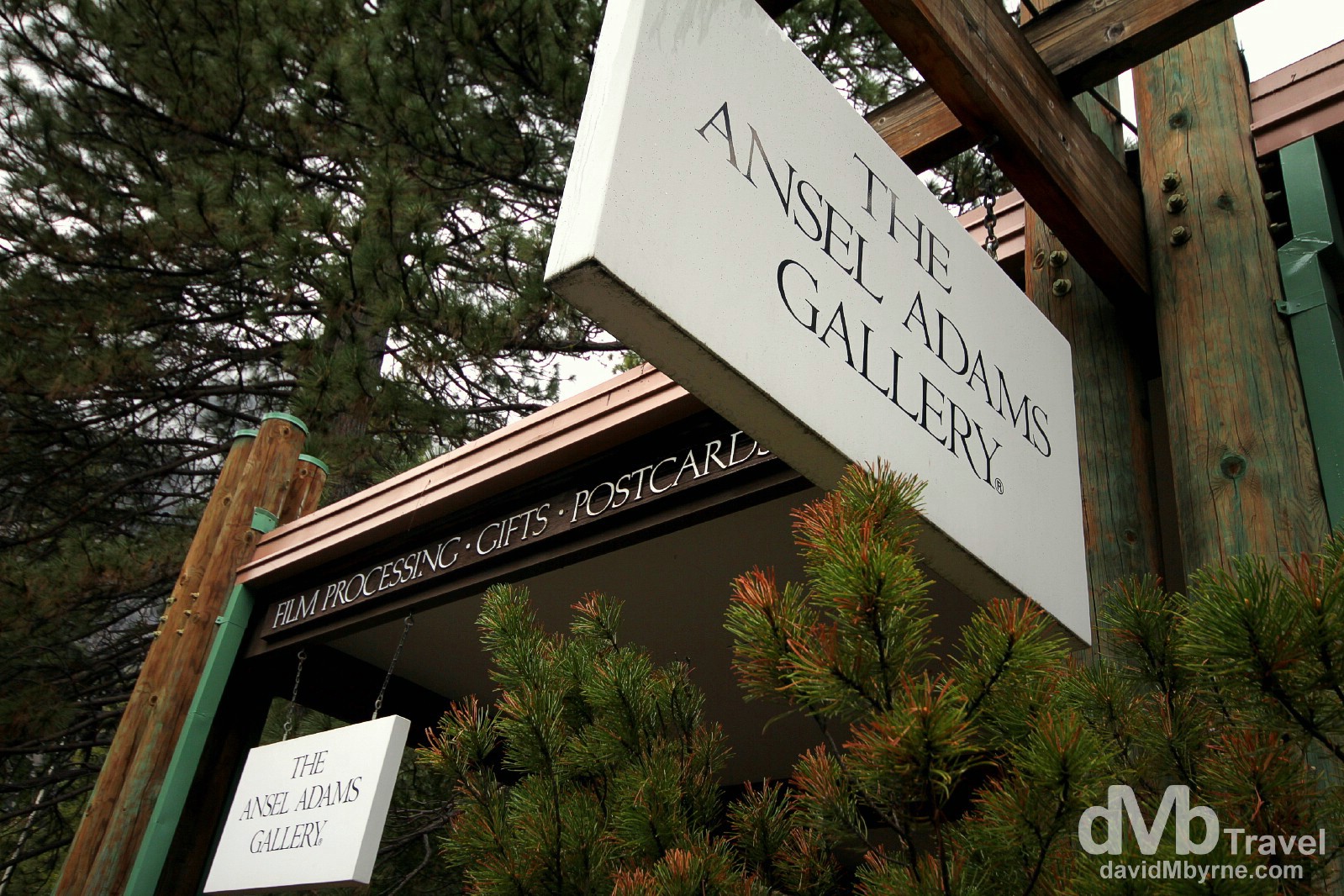
The Ansel Adams Gallery in Yosemite Valley, Yosemite National Park, California, USA. April 1, 2013.
A couple by the name of Harry & Ann Best started a photography business in Yosemite Valley in 1902. Their only daughter, Virginia, married an aspiring photographer by the name of Ansel Adams. Adams, widely regarded as the best photographer who ever lived, went on to immortalise Yosemite National Park though his classic black & white images, images credited with pushing the popularity of landscape photography while helping to motivate the American environmental movement. Today the Best family continues to operate their photography business here, at the Ansel Adams Gallery.
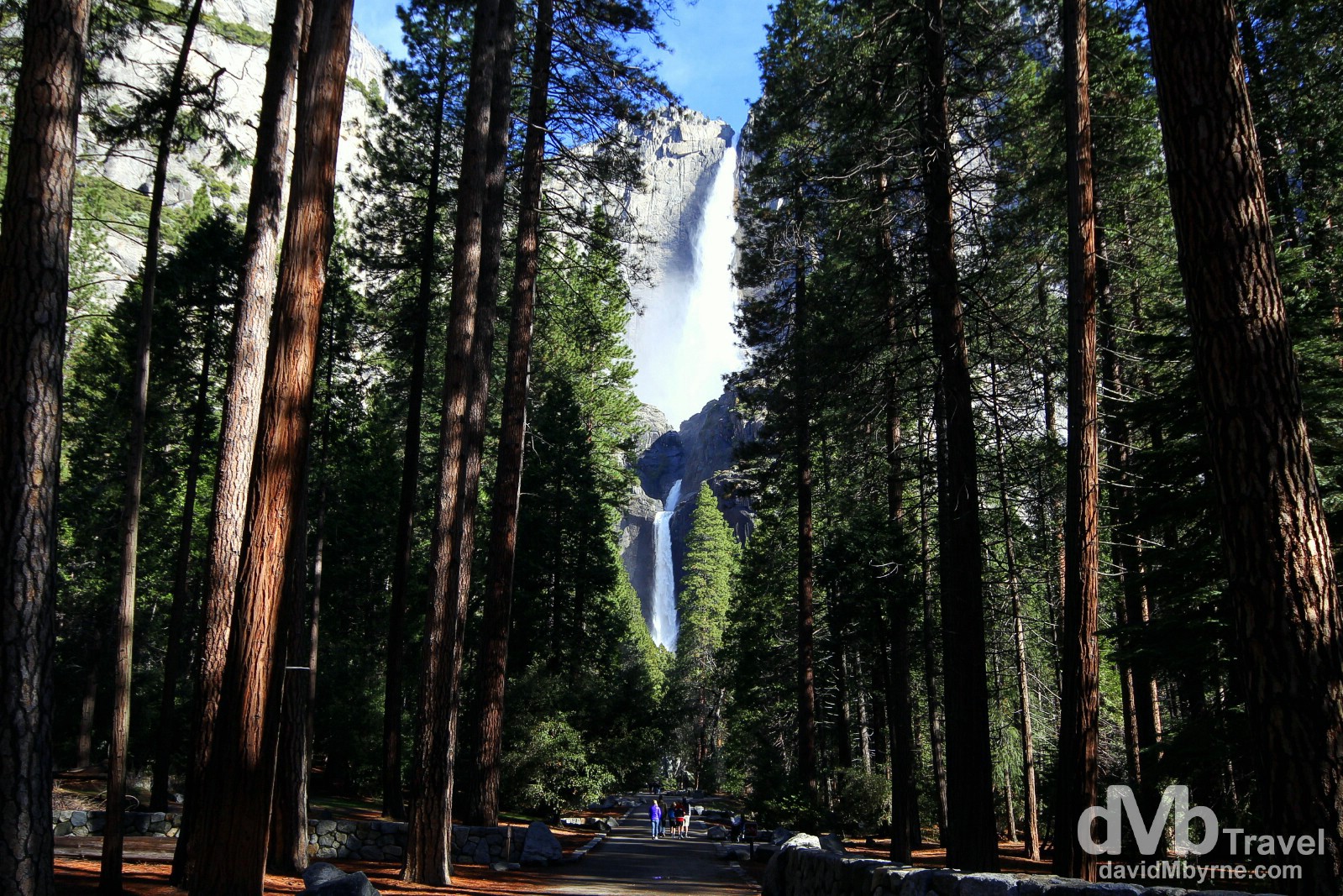
The Ansel Adams gallery offers free guided early morning photo walks in the Yosemite Valley. I was going to leave the park the evening before but decided to hang around for the following morning’s walk, on which I captured this picture of people walking the path through cedar trees to the Upper & Lower Yosemite Falls lookout in Yosemite Valley. Yosemite National Park, California, USA. April 2, 2013
Yosemite And Photography
The natural beauty of Yosemite inspires artists from all over the world. Early paintings & photographs encouraged people to visit the park, & also inspired people to preserve it and other beautiful places like it. Thus photography was instrumental in helping to get Yosemite set aside as a protected place. The Yosemite Visitors Centre had a small exhibit on early park photography. In the 1800s, taking photos in Yosemite was quite the production. Pioneer photographers such as Carleton Watkins carried boxes, bottles & equipment by horseback or pack train, then erected a portable darkroom – often just a canvas tent – on site. They used mammoth cameras capable of making 18 x 22 inch negative plates & the photographer balanced a 2-pound sheet of glass in one hand while pouring emulsion over its surface with the other, all the while tilting the glass back & forth. When it became sticky, they placed the plate in the camera to be exposed, before heading to the tent to develop the plate. Quite the ordeal indeed. Think I’ll stick with digital.
Tunnel View
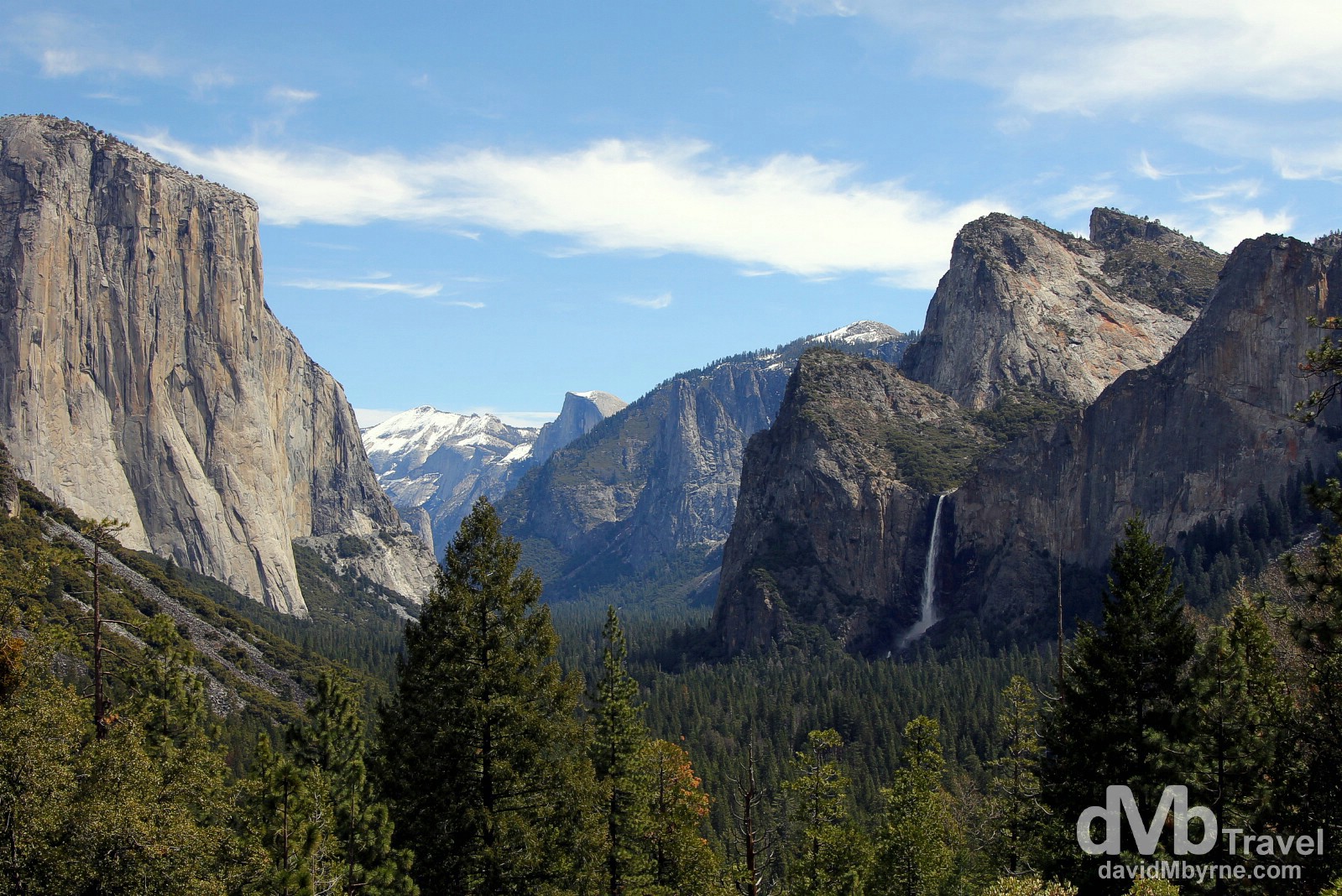
One of the iconic Yosemite scenes, that of Yosemite Valley as seen from the Tunnel View lookout. A picture captured upon my exit from the park en route south to Sequoia National Park, the Tunnel View lookout gives visitors a view of the Yosemite Valley with El Capitan on the left, Bridalveil Falls on the right and Half Dome in the distant centre. Yosemite National Park, California, USA. April 2, 2013.
